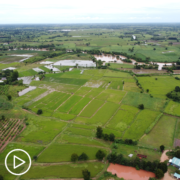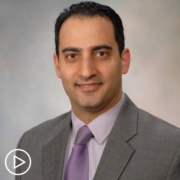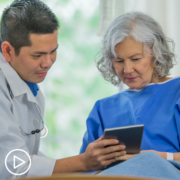Understanding Distinct Barriers to Myeloma Clinical Trial Participation
Understanding Distinct Barriers to Myeloma Clinical Trial Participation from Patient Empowerment Network on Vimeo.
What are some ways for myeloma advancements to be driven forward? Expert Dr. Beth Faiman from Taussig Cancer Institute discusses additional solutions to help research efforts for diverse participation in clinical trials.
Download Resource Guide|Descargar guía de recursos
Related Resources:

|

|

|
Transcript:
Dr. Nicole Rochester:
Are there any additional solutions that you think are necessary as we continue to see advancements in myeloma?
Dr. Beth Faiman:
Continuing education for these highly trained providers. And so those kind of…the education though, I’ll tell you, I think should focus a lot on the disparities in clinical research. One of the things I’m passionate about is highlighting the implicit and explicit biases that are in clinical research. Many of us will say, “Oh, that person won’t be a good clinical trial candidate because they live too far away or they don’t have a caregiver.” And so I’m really…I tell all of my nurses, nurse practitioners, even physicians, just ask a patient. Don’t think that because they live an hour away, they’re not going to want to participate in a well-designed clinical trial without even asking them. That doesn’t even allow them the opportunity to provide feedback.
And then not to mention all of the resources that are available to patients that provide, that participate in clinical trials. Many of the research studies will provide transportation or an overnight stay or some nominal, again, not trying to coerce the patients, but some nominal reimbursement for expenses to allow them to have access to that drug. So I can talk on and on, because I’m so passionate about this topic. But being aware that biases exist, through continuing education will hopefully enhance the diversity of clinical trials so that patients will be able to have access to care, and then that the clinical trial results are representative of the actual population of who we’re treating.
Dr. Nicole Rochester:
Thank you. I can definitely feel they’re both of your passion, and that’s why it’s so important that we have you here with us today for this conversation. So let’s shift focus a little bit and begin to talk about communication between healthcare providers to effectively communicate about pretrial eligibility determination and the consent process. So I’m going to go right back to you, Dr. Faiman. What do you think are the unique barriers that providers face when they’re speaking about myeloma trials to patients and their families?
Dr. Beth Faiman:
Right. So I think multiple myeloma is unique in that there is such an explosion of new therapies within the last decade. There hasn’t been such momentum in any other cancer such as multiple myeloma. But, unfortunately, there are challenges such as language barriers and communication problems that overarching with all the different specialties. The geographic I had already mentioned in a previous discussion about the geographic barriers to participate in clinical trials, not meeting inclusion criteria, I think it takes an astute nurse or advanced practice provider or physician to now sequence the therapy.
So for example, they have new therapies such as BCMA-targeted drugs that are available through cellular therapy trials or bispecific antibody trials. And without getting too specific into the drugs, you need a specialist to be able to say, “Okay, if I give you this drug today, that will exclude you from a clinical trial that might be very innovative and promising in the future.”
So those are unique barriers to accessing clinical trials or standard therapies for that matter because of the plethora of therapies that are available. So getting in, having patients get in with a myeloma specialist, they might not see them on a regular basis, maybe employ telehealth techniques, see them once and then virtually connect, share information about what might be available. Those are ways that you can provide access to patients, caregivers, and others throughout their disease trajectory because they’re living longer than ever.
Dr. Nicole Rochester:
Which is a wonderful thing.
Dr. Beth Faiman:
Yes.










